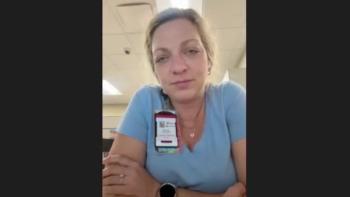
New Guidelines Clarify EORTC Quality of Life Scores for Chronic Lymphocytic Leukemia
Key Takeaways
- New EORTC guidelines establish meaningful change thresholds for symptom burden, physical condition/fatigue, and worries/fears in R/R CLL or SLL patients.
- Thresholds help identify significant health-related quality of life improvements and guide treatment effect assessments in clinical trials.
Meaningful change thresholds for the EORTC Quality of Life Questionnaire in chronic lymphocytic leukemia (CLL) or small lymphocytic lymphoma (SLL) are: −11/+11 for symptom burden, −16/+16 for physical condition/fatigue, and −16/+13 for worries/fears.
New guidelines for interpretation of the European Organisation for Research and Treatment of Cancer Quality of Life Questionnaire (EORTC) for adults with relapsed or refractory (R/R) chronic lymphocytic leukemia (CLL) or small lymphocytic lymphoma (SLL) reveal that a changed score of −11/+11 for symptom burden, −16/+16 for physical condition/fatigue and −16/+13 for worries/fears on health and functioning indicate meaningful improvement or worsening of the condition, according to a study in
“These estimated thresholds may be used to identify patients with meaningful improvements in health-related quality of life (HRQOL) based on patient-reported outcome (PRO) data and guide interpretation of the EORTC CLL-specific module (EORTC QLQ-CLL17) domain scores when used to assess treatment effects in future clinical trials,” the authors stated.
The analysis included data from 240 observations between 1 and 18 months. The meaningful change thresholds for improvement and deterioration at the group level mostly ranged between 0.3 and 0.5 of the standard deviation of baseline domain scores.
For the symptom burden domain, potential meaningful within-patient change (MWPC) threshold ranges based on the mean and median changes obtained from all target anchor groups fell between −8.13 and −17.81 points for improvement and 7.44 and 11.85 points for deterioration. For the physical condition/fatigue domain, the potential MWPC threshold ranges fell between −16.67 and −25.00 points for improvement and 8.33 and 16.67 points for deterioration. When focusing on worries/fears in the health and functioning domain, the potential MWPC threshold ranges fell between −15.47 and −19.52 for improvement and 0 and 10.18 for deterioration.
The potential meaningfulness of within-group changes for the symptom burden domain was expressed as clinically important change (CIC) thresholds from the anchor-based methods. They were found to be between −9.06- and −18.72-point changes for improvement. For deterioration, estimates were between 6.94- and 10.10-point changes.
For the physical condition/fatigue domain, estimates for the CIC threshold were found to be between −15.58- and −17.28-point changes for improvement. For deterioration, estimates were between 12.50- and 12.88-point changes. For the worries/fears on health and functioning domain, estimates for the CIC threshold were found to be between −12.93- and −15.80-point changes for improvement. For deterioration, estimates were between 1.26- and 4.16-point changes.
These responder definition (RD) thresholds represented a change of 2 points or more on the raw scale for all domains. However, the threshold for improvement in the worries/fears on health and functioning domain required a 3- to 4-point change on the raw scale.
Among 62 patients who underwent leukapheresis, the mean age was 64; 90% of patients were White, 27% of patients were female. For disease type, 94% had CLL, and 6% had SLL. In terms of disease status after last treatment, 81% had refractory, 0% had relapsed, and 19% were reported as unknown.
Data for the analysis were from phase 2 of the TRANSCEND CLL 004 study, a phase 1/2, open-label, multicenter study that evaluated the efficacy and safety of lisocabtagene maraleucel (liso-cel) in adults with R/R CLL. The study found that the safety profile was manageable and that a single infusion of liso-cel induced complete response or remission in patients with R/R CLL or SLL, including patients whose disease worsened on a previous BTK inhibitor and venetoclax failure.2
“These thresholds may be useful in clinical studies to define treatment responders (using MWPC/RD) with respect to HRQOL or aid in the interpretation of the meaningfulness of within-group mean changes from baseline (using CIC) and between-group difference in mean changes (using CID) based on this instrument,” the authors wrote.
References
1. Eliason L, Fofana F, Wang L, Riedell PA, Guo S. Establishing meaningful change thresholds for European Organisation for Research and Treatment of Cancer Quality of Life Questionnaire CLL-specific module domain scores: An analysis based on the TRANSCEND CLL 004 study in patients with relapsed or refractory chronic lymphocytic leukaemia or small lymphocytic lymphoma. eJHaem. 2024. doi: 10.1002/jha2.1007
2. Siddiqi T, Maloney DG, Kenderian SS, et al. Lisocabtagene maraleucel in chronic lymphocytic leukaemia and small lymphocytic lymphoma (TRANSCEND CLL 004): a multicentre, open-label, single-arm, phase 1–2 study. Lancet. 2023; 402(10402): 641‒654. doi: 10.1016/S0140-6736(23)01052-8
Newsletter
Stay ahead of policy, cost, and value—subscribe to AJMC for expert insights at the intersection of clinical care and health economics.
















































